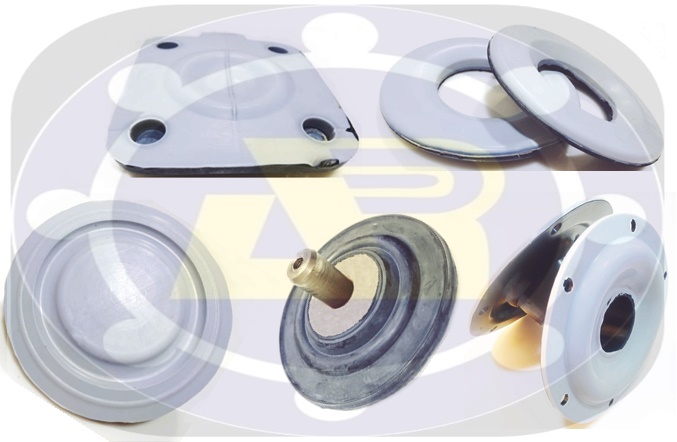
RUBBER TO PTFE BONDED

Rubber to PTFE Bonded seals, also known as rubber bonded PTFE seals, are specialized sealing components that combine the properties of rubber and polytetrafluoroethylene (PTFE) to provide an effective sealing solution. These seals are commonly used in applications that require both the flexibility and resilience of rubber and the low friction and chemical resistance of PTFE. The rubber to PTFE bonding process involves bonding a layer of PTFE to a rubber substrate, typically using heat and pressure. The PTFE layer provides excellent resistance to chemicals, high temperatures, and low friction, while the rubber substrate provides flexibility, resilience, and the ability to conform to irregular surfaces.
Materials
All Synthetic Rubbers.
———————————
The combination of Rubber and PTFE in a bonded seal offers several advantages:
Chemical resistance: PTFE is highly resistant to a wide range of chemicals, including acids, solvents, and corrosive substances. This makes rubber to PTFE bonded seals suitable for sealing applications involving aggressive media.
Low friction: PTFE has a very low coefficient of friction, which helps reduce wear and heat generation in dynamic sealing applications. It allows for smooth movement of the sealed components and minimizes energy losses.
High temperature resistance: PTFE can withstand high temperatures without losing its sealing properties. Rubber to PTFE bonded seals can operate in extreme temperature conditions, making them suitable for applications in automotive, aerospace, and industrial sectors.
Excellent sealing performance: The combination of rubber’s flexibility and PTFE’s low friction and chemical resistance results in effective sealing against fluids, gases, and contaminants. Rubber to PTFE bonded seals can maintain a reliable seal even under high-pressure conditions.
These seals find applications in various industries, including automotive, aerospace, chemical processing, oil and gas, and food processing, among others. Common applications include hydraulic systems, pumps, valves, compressors, and sealing connections in pipelines or equipment.

